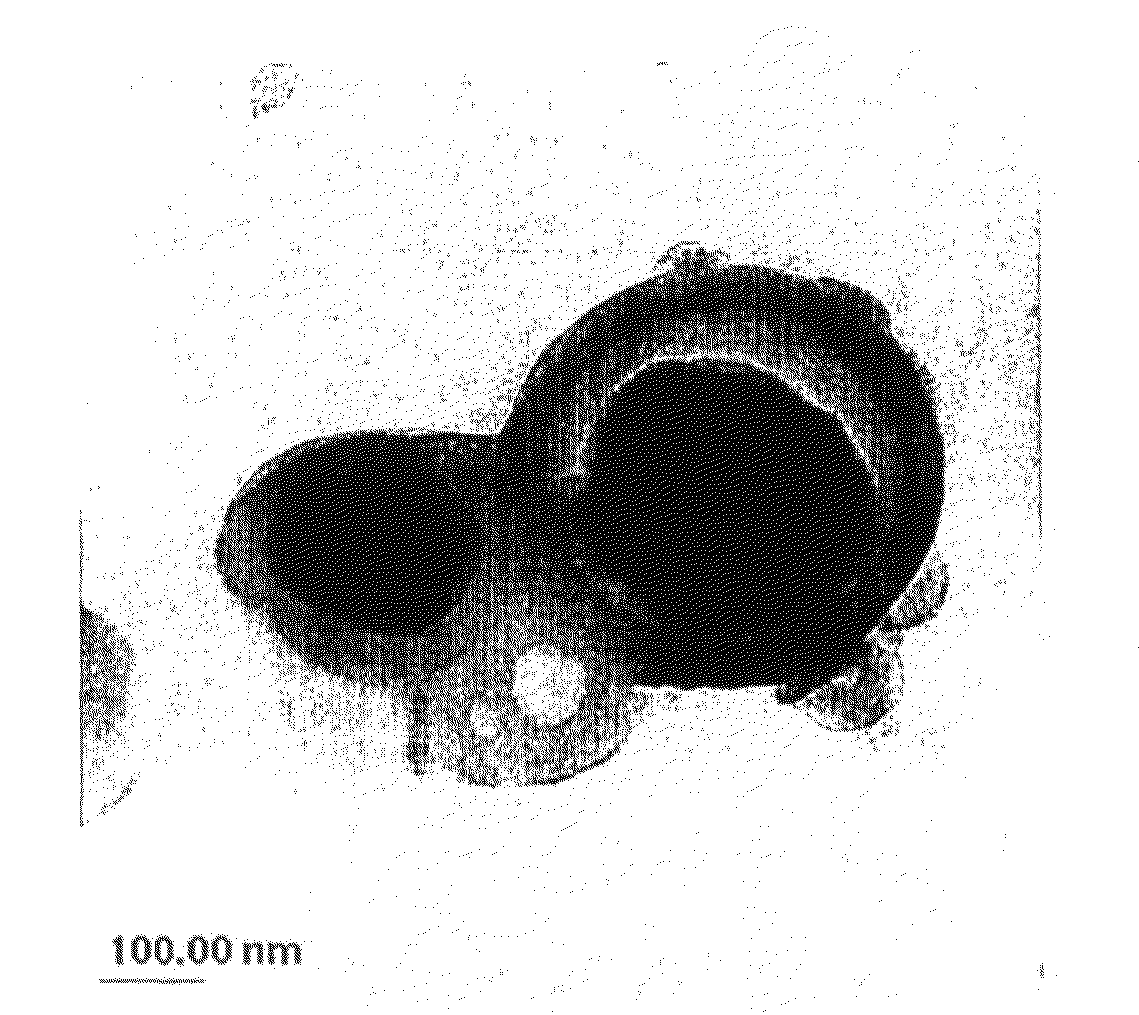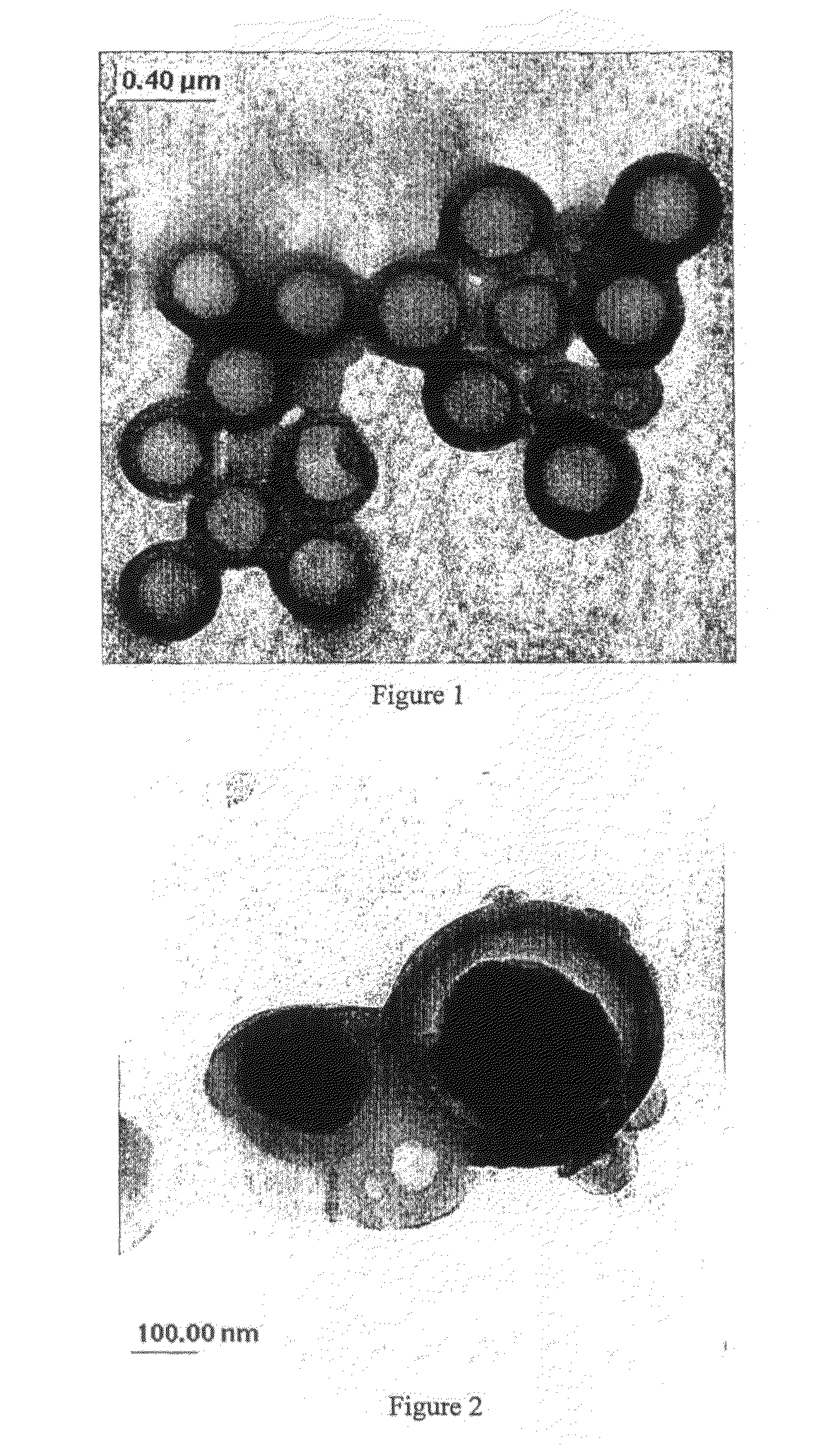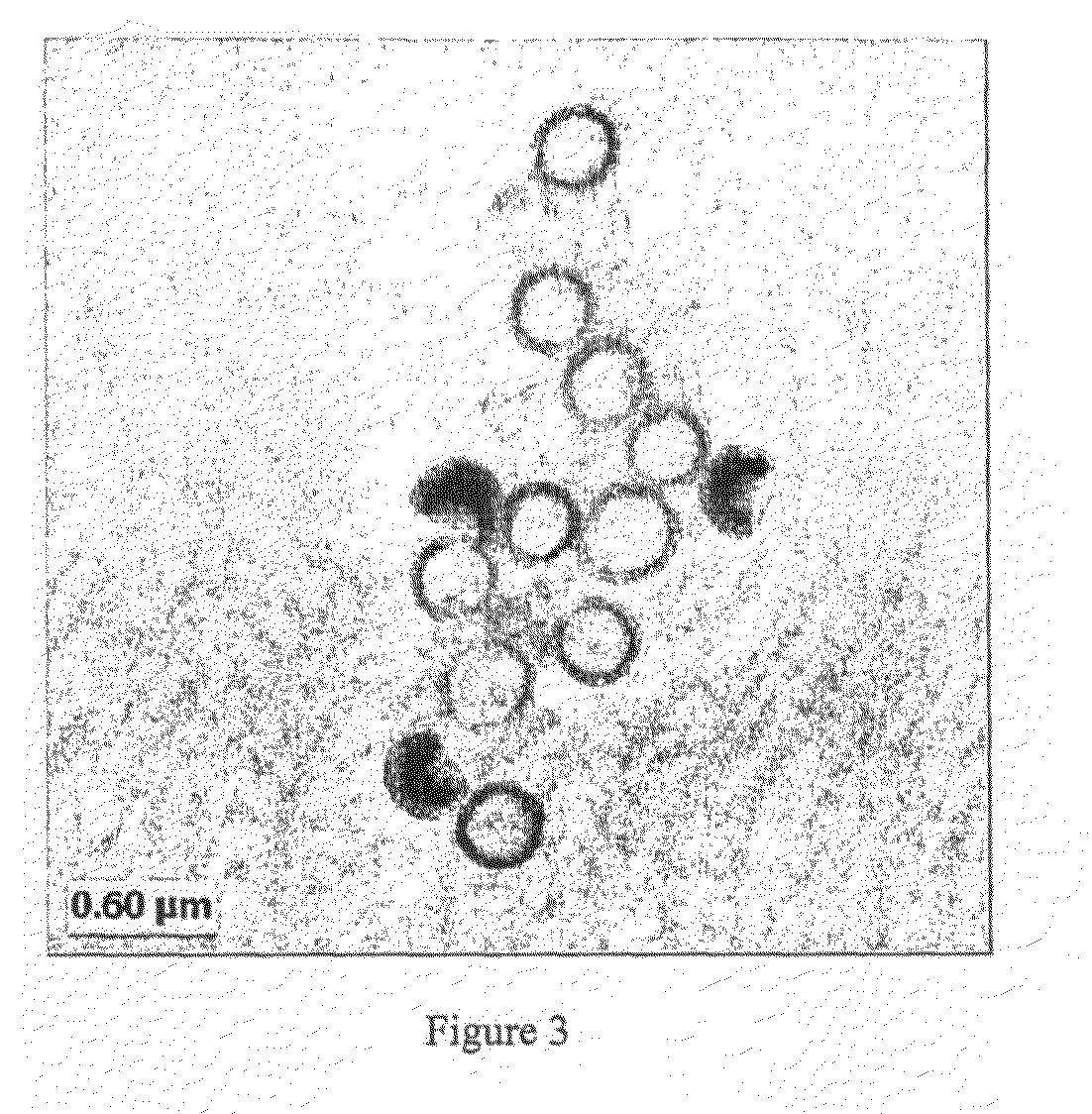Vesiculated polymer particles
- Summary
- Abstract
- Description
- Claims
- Application Information
AI Technical Summary
Benefits of technology
Problems solved by technology
Method used
Image
Examples
example 1
Synthesis of Polymeric Hollow Particles Using Diblock poly(AA-b-BA) of 2-{[(butylsulfanyl)carbonothioyl]sulfanyl}propanoic Acid RAFT Agent
[0226]Part 1.1: Preparation of a Diblock poly[(butyl acrylate)m-b-(acrylic acid)n] macro-RAFT Agent with Respective Degrees of Polymerization m≈5 and n≈5, in Dioxane
[0227]A solution of 2-{[(butylsulfanyl)carbonothioyl]sulfanyl}propanoic acid (2.0 g, 8.4 mmol), 2,2′-azobisisobutyronitrile (0.118 g, 0.42 mmol), acrylic acid (3.02 g, 42.0 mmol) in dioxane (12.0 g) was prepared in a 50 mL round bottom flask. This was stirred magnetically and sparged with nitrogen for 10 minutes. The flask was then placed in a 60° C. oil bath for 2 hours with constant stirring. To the reacted mixture, butyl acrylate (5.33 g, 42 mmol), 2,2′-azobisisobutyronitrile (0.03 g, 0.12 mmol) and dioxane (4.0 g) were added and again sparged with nitrogen for 10 minutes. The flask was then placed in a 70° C. oil bath for 3 hours with constant stirring. The final copolymer solution...
example 2
Synthesis of Polymeric Hollow Particles Using Random poly(AA-co-BA) of 2-{[(butylsulfanyl)carbonothioyl]sulfanyl}propanoic Acid RAFT Agent
[0233]Part (2.1): Preparation of a random poly[(butyl acrylate)m-co-(acrylic acid)n] macro-RAFT Agent with Respective Degrees of Polymerization m≈50 and n≈20, in Dioxane
[0234]A solution of 2-{[(butylsulfanyl)carbonothioyl]sulfanyl}propanoic acid (0.50 g, 2.10 mmol), 2,2′-azobisisobutyronitrile (0.036 g, 0.22 mmol), acrylic acid (3.03 g, 42.10 mmol), butyl acrylate (13.70 g, 106.90 mmol) in dioxane (25.66 g) was prepared in a 50 mL round bottom flask. This was stirred magnetically and sparged with nitrogen for 10 minutes. The flask was then placed in a 70° C. oil bath for 2 hours with constant stirring. The final copolymer solution had solids of 39.7%. The dioxane was then evaporated off under a stream of nitrogen.
Part (2.2): Synthesis of Polystyrene Hollow Particles Using the macro-RAFT Agent Prepared in Part (2.1) as a Sole Stabilizer.
[0235]A sol...
example 3
Synthesis of Polymeric Hollow Particles Using Random poly(DMAEMA-co-BA) of 2-{[(butylsulfanyl)carbonothioyl]sulfanyl}propanoic Acid RAFT Agent
[0236]Part (3.1): Preparation of a random poly[(butyl acrylate)m-co-(dimethylamino ethyl methacrylate)n] macro-RAFT agent with respective degrees of polymerization m≈60 and n≈30
[0237]A solution of 2-{[(butylsulfanyl)carbonothioyl]sulfanyl}propanoic acid (0.19 g, 0.79 mmol), 2,2′-azobisisobutyronitrile (0.01 g, 0.08 mmol), dimethylamino ethyl methacrylate (3.73 g, 23.74 mmol), butyl acrylate (6.09 g, 47.50 mmol) in dioxane (10.08 g) was prepared in a 25 mL round bottom flask. This was stirred magnetically and sparged with nitrogen for 10 minutes. The flask was then maintained at 70° C. and maintained at that temperature for at least 8 hours with constant stirring. The final copolymer solution had 44.6% solids.
Part (3.2): Synthesis of Polystyrene Hollow Particles Using the macro-RAFT Agent Prepared in Part (3.1) as a Sole Stabilizer
[0238]A solut...
PUM
| Property | Measurement | Unit |
|---|---|---|
| Size | aaaaa | aaaaa |
| Weight | aaaaa | aaaaa |
| Molar ratio | aaaaa | aaaaa |
Abstract
Description
Claims
Application Information
 Login to View More
Login to View More - R&D
- Intellectual Property
- Life Sciences
- Materials
- Tech Scout
- Unparalleled Data Quality
- Higher Quality Content
- 60% Fewer Hallucinations
Browse by: Latest US Patents, China's latest patents, Technical Efficacy Thesaurus, Application Domain, Technology Topic, Popular Technical Reports.
© 2025 PatSnap. All rights reserved.Legal|Privacy policy|Modern Slavery Act Transparency Statement|Sitemap|About US| Contact US: help@patsnap.com



